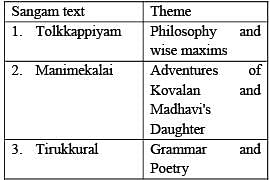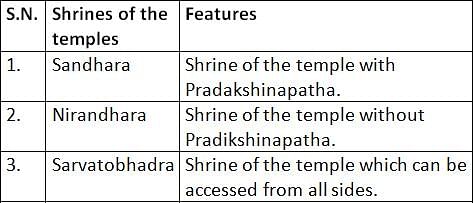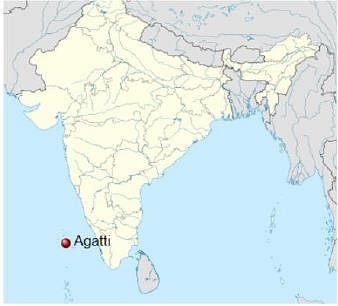UPSC CSE Complete Practice Test - 11 - UPSC MCQ
30 Questions MCQ Test - UPSC CSE Complete Practice Test - 11
Consider the following:
- Nagasena associated with book Milinda Panho.
- Buddhaghosa was founder of the Madhyamaka school of Mahayana Buddhism
- Vasubandhu wrote from the perspective of the Sautrantika schools.
How many of the above statements are correct about Buddhist scholars?
Consider the following statements.
- The Coinage Act, 2011 gives the central government the power to design and mint coins in various denominations.
- All of India’s currency note printing presses are owned by the Government of India.
- The first banknote issued in independent India was the Re 1 note that replaced the portrait of King George with the symbol of the Lion Capital of the Ashoka Pillar at Sarnath.
How many of the above statements is/are correct?
| 1 Crore+ students have signed up on EduRev. Have you? Download the App |
Which of the following are the examples of Oxidation Reaction?
- The taste of butter changes if left for a longer time
- Wine gets sour with time
- A reddish brown powder gets coated on articles made of iron
How many of the above statements is/are correct?
Recently the Ministry of Jal Shakti released a document, which is the first such census of water bodies in India. Consider the following statements in this context.
- Tamil Nadu has the highest number of lakes in India.
- Among the total number of utilised water bodies in India, majority is used for irrigation.
- More than 90% of water bodies can be found in rural regions.
How many of the above statements is/are correct?
Consider the following statements.
- The combination of high temperature and low humidity is referred to as the wet bulb temperature.
- High moisture content in the atmosphere makes it difficult for the sweat to evaporate and bodies to cool down.
- Oral rehydration solutions (ORS) can act as lifesavers during heatstroke.
How many of the above statements is/are correct?
Carbon Border Adjustment Mechanism (CBAM), sometimes seen in news is the initiative of
Consider the following:
1. Accessibility
2. Affordability
3. Frontline functionaries
4. Real-time Data
How many of the above given are the pillars of Tele-law initiative?
‘Agatti Island’, often mentioned in the news, is located in which one of the following union territories of India?
The name of rock type means ‘change of form’. These rocks form under the action of pressure, volume and temperature (PVT) changes. It is a process by which already consolidated rocks undergo recrystallisation and reorganisation of materials within the original rocks.
Which one of the following types of rocks is best described by the above paragraph?
With reference to Temperate Deciduous Forest and Tundra, consider the following statements:
- The flora includes trees like beech, oak, maple and cherry.
- The typical animals seen here are reindeer, arctic fox, polar bear, snowy owl and arctic hare.
- These are generally the most productive agricultural areas of the earth.
How many of the statements given above are correct?
The Insurance Regulatory and Development Authority of India (IRDAI) has provided approval for Bima Sugam Portal. Consider the following statements in this regard:
- It will bring all companies selling life, general insurance, and health insurance on a single platform.
- It will facilitate the purchase of insurance policies as well as the settlement of claims.
- The policyholder can access various portal services through an e-insurance account (E-IA).
Which of the statements given above are correct?
Consider the following statements :
Statement-I : Longer surf boards are more stable while maneuvering in water.
Statement-II : Longer surf boards have more volume and surface area interacting with water.
Which one of the following is correct in respect of the above statements?
Consider the following pairs :

How many of the above pairs are correctly matched?
With reference to the early Arab invasions of India, consider the following statements:
- The battle of Qadisiya brought the Arab armies to the frontiers of al-Hind.
- The early invasion of Arabs took place on the eastern coast of India.
Which of the statements given above are incorrect?
Consider the following statements :
- Political Parties are required to be registered with Election Commission of India under Section 29A of the Representation of People Act, 1951
- Political Parties can recommend disqualifi cation of Members of the House in certain contingencies under the Tenth Schedule
- Election Commission of India calls for details of expenses made by Political Parties in the elections
- Election Commission of India can suspend or withdraw recognition of a political party.
How many of the above statements justify constitutional and legal rights and liabilities of Political Parties in India?
Consider the following statements regarding the Inflation:
Statement-I: It is the percentage change in the value of the Wholesale Price Index (WPI) on a year-on year basis.
Statement-II: In India, inflation is calculated by taking the Consumer Price Index (CPI) as base.
Which one of the following is correct in respect of the above statements?
The Constitution, under Sixth Schedule, contains special provisions for the administration of tribal areas in which of the following states?
1. Tripura
2. Manipur
3. Assam
4. Meghalaya
5. Nagaland
6. Mizoram
Select the correct answer using the code given below:
Consider the following statements regarding Insurance In India:
- Properties in India cannot be insured with a foreign insurer.
- The orders given by the Insurance Regulatory and Development Authority (IRDA) are final, and there lies no appeal against these orders.
Which of the statements given above are correct?
Consider the following statements:
- Shyamji Krishnavarma had started in London an Indian Home Rule Society‘India House’-as a centre for Indian students.
- Revolutionaries such as Savarkar and Hardayal became the members of India House.
Which of the statements given above is/are correct?
With reference to the properties of the Graphene, consider the following statements:
- It is a two-dimensional form of carbon.
- It consists of a multi layers of carbon atoms arranged in a hexagonal lattice.
- It is prepared by heating Graphite, Coal tar and or Shellac.
Which of the statements given above is/are correct?
With reference to the features of administration contained in the Sixth Schedule, consider the following statements:
Statement-I: The district and regional councils within their territorial jurisdictions can constitute village councils or courts for trial of suits and cases between the tribes.
Statement-II: The jurisdiction of high court over suits and cases between the tribes is specifi ed by the Governor.
Which one of the following is correct in respect of the above statements?
Consider the following pairs:

How many of the above pairs is/are correctly matched?
Consider the following statements:
- Temperature inversion, that causes air pollutants to dwell near the surface for a longer time leading to serious health risks to all life forms, is a typical feature of the summer season.
- PM2.5, due to their small size, reaches deeper into the respiratory system as compared to PM10 or larger particles.
- The pollutants emitted by engines such as Nitrogen oxides (NOx) and Volatile Organic Compounds (VOC) in the presence of sunlight produce ozone as a secondary pollutant.
How many of the above statements is/are correct about the various effects of air pollution at the global as well as local level?
Consider the following statements regarding BRICS Bank:
- It was created by the Fortaleza Declaration.
- It supports projects in both public and private sectors through loans and other instruments.
Which of the statements given above are correct?
Which of the following texts elaborates on the trading activity during the Sangam age?
With reference to legislative reforms introduced by the Indian Councils Act of 1861, consider the following statements:
- The act for the first time separated the legislative and executive functions of the British government in India.
- The act provided for a majority of nonofficial members in the Governor General Executive Council for legislative purposes.
- The Central Legislative Council constituted under this act did not have the right to vote on the Budget.
Which of the statements given above is/are correct?
As the exhaust passes through which of the following, where the unburnt hydrocarbons are converted into carbon dioxide and water, and carbon monoxide and nitric oxide are changed to carbon dioxide and nitrogen gas, respectively.
Which of the following statements about factors affecting exchange rate system is incorrect?
Consider the following statements with reference to the Naegleria fowleri:
- It is a free-living amoeba commonly found in warm fresh water and soil.
- People can be infected with Naegleria fowleri even by drinking contaminated water.
- It feeds on other small organisms like bacteria found in the sediment of lakes and rivers.
How many of the statements given above are correct?


















